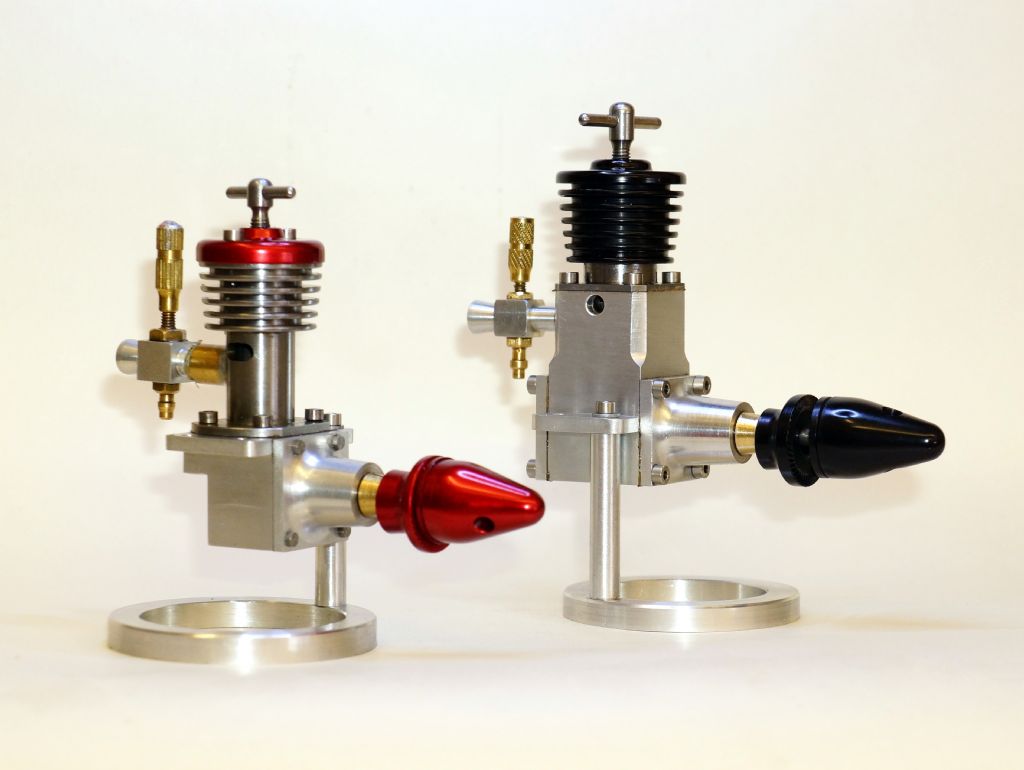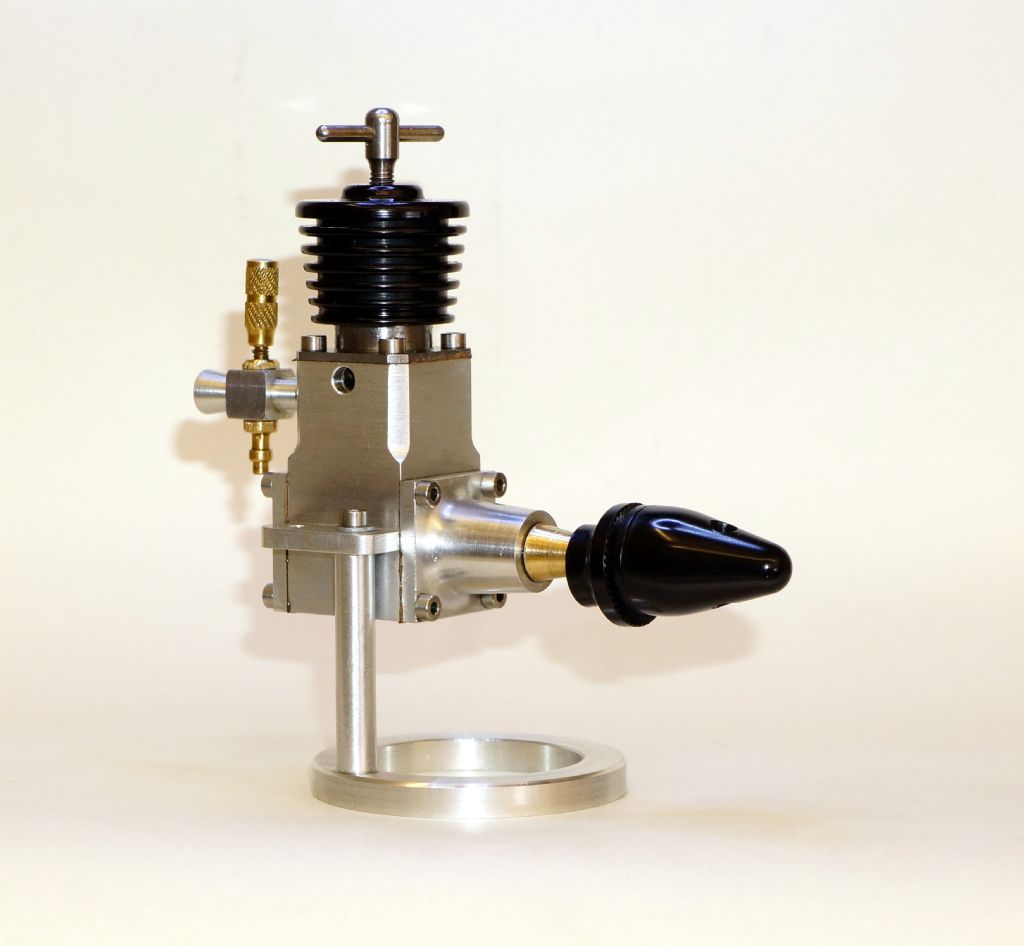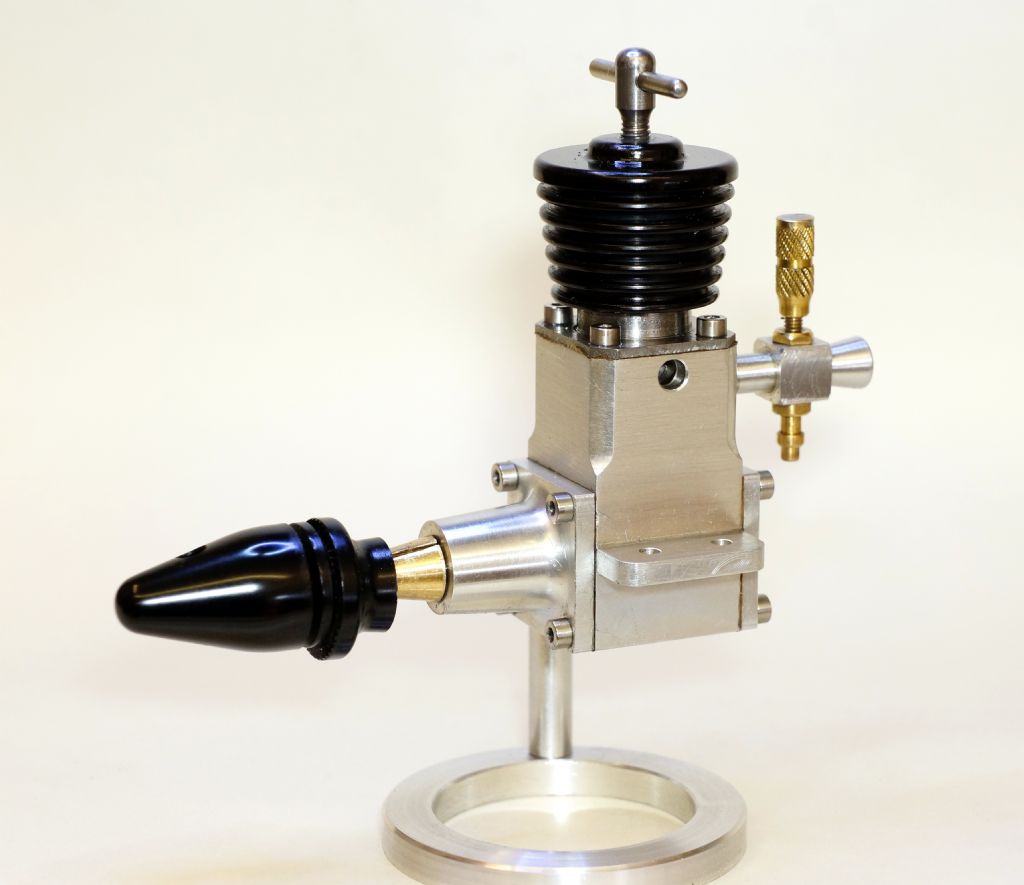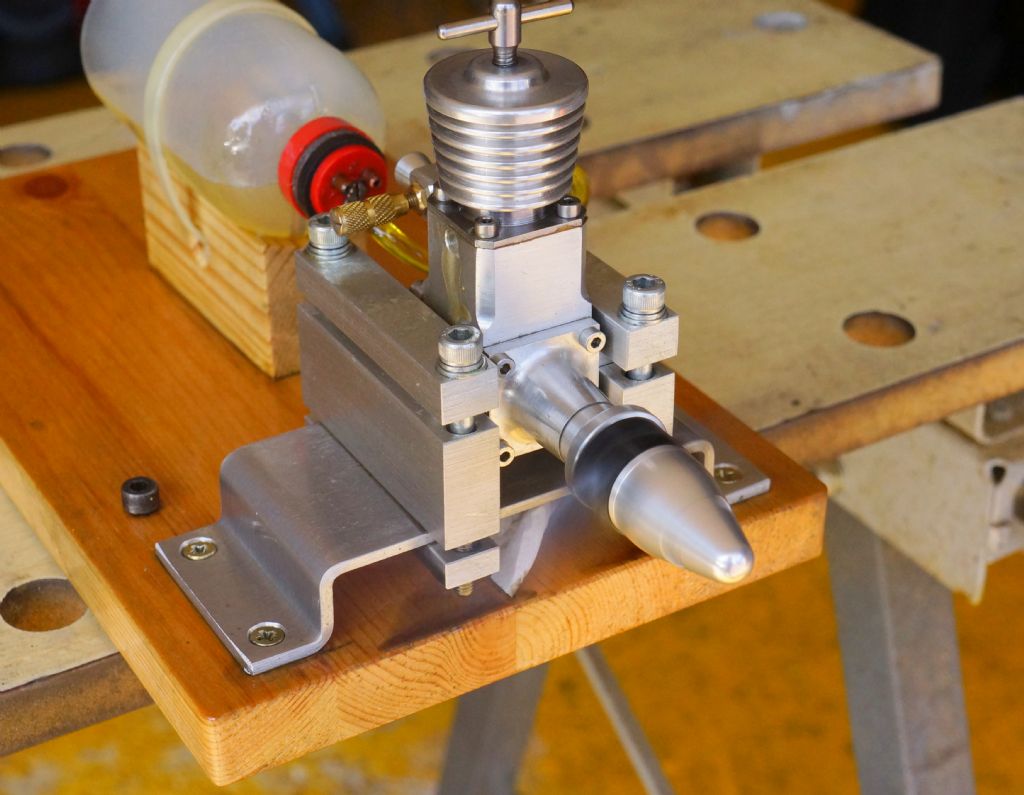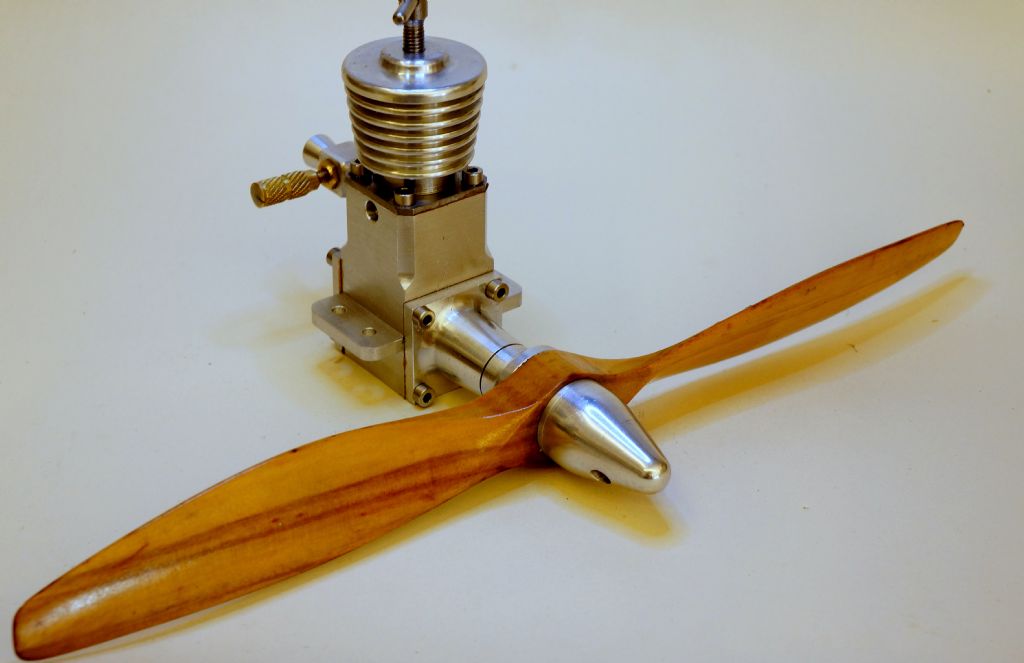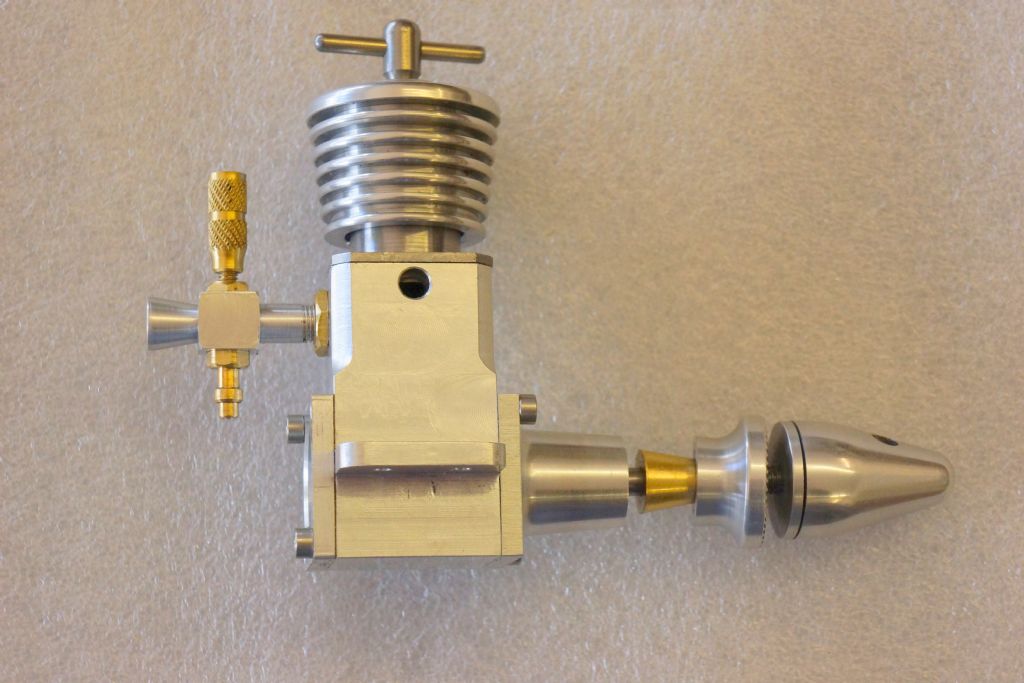




 These are photos of my latest model engine build. After the successful making of the Chris Boll designed Cicada,I thought I would follow up with another of his designs for which drawings are freely available to download and are designed to be made from bar stock. The Bol-Aero has radial mounting and this does not fit well with my test mount set up, so I decided to make the crankcase with standard beam mounts. The carb, as drawn, is mounted on the side of the crankcase and would also not be compatible with my test mount, so that was moved to the rear face. This gave the opportunity to have another exhaust port, but this meant moving the fuel bypass to the front of the liner, and, so it went on. As every part came up for scrutiny before machining,I found one mod was leading to another and the finished engine only has the bore, stroke and timing of the original, plus the backplate of the crankcase is "as drawn" and that is all.
These are photos of my latest model engine build. After the successful making of the Chris Boll designed Cicada,I thought I would follow up with another of his designs for which drawings are freely available to download and are designed to be made from bar stock. The Bol-Aero has radial mounting and this does not fit well with my test mount set up, so I decided to make the crankcase with standard beam mounts. The carb, as drawn, is mounted on the side of the crankcase and would also not be compatible with my test mount, so that was moved to the rear face. This gave the opportunity to have another exhaust port, but this meant moving the fuel bypass to the front of the liner, and, so it went on. As every part came up for scrutiny before machining,I found one mod was leading to another and the finished engine only has the bore, stroke and timing of the original, plus the backplate of the crankcase is "as drawn" and that is all.
I had no problem finding the compression point that fires it up and it started on about the third flick. After 6 short 3 minute runs, cooling down between each, it is happily running at around 6500 RPM with a "8×4" nylon propellor. At this stage I decided to make it pretty and sent the cooling fins, prop driver and spinner to my friendly anodising firm for the black finish, with which I am very pleased. As my initials are J K B, I thought I might be cheeky and describe this as the "J K BEE" version of the BOLL-AERO 1.8 diesel.
 Grindstone Cowboy.
Grindstone Cowboy.

